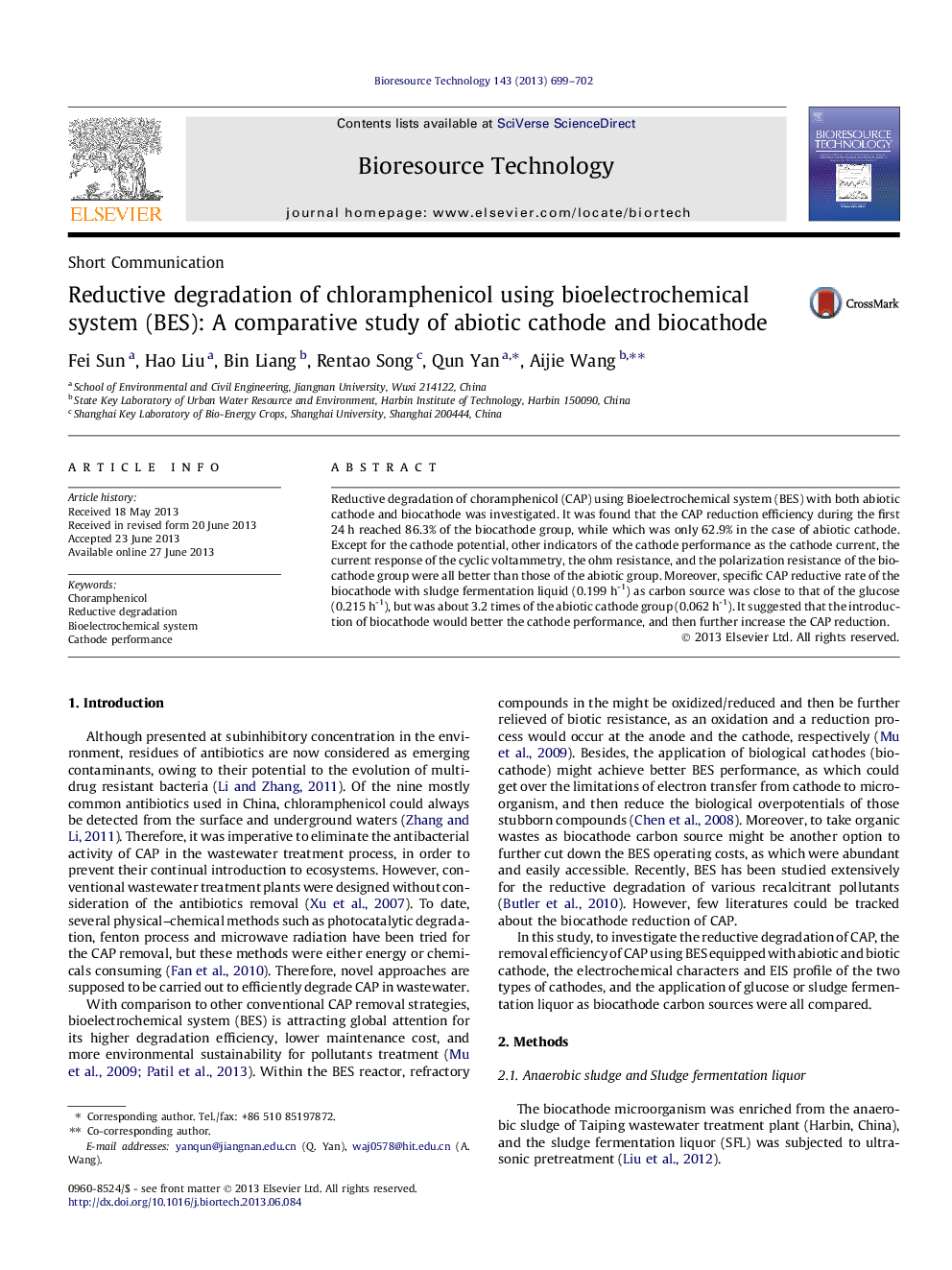| Article ID | Journal | Published Year | Pages | File Type |
|---|---|---|---|---|
| 7081949 | Bioresource Technology | 2013 | 4 Pages |
Abstract
Reductive degradation of choramphenicol (CAP) using Bioelectrochemical system (BES) with both abiotic cathode and biocathode was investigated. It was found that the CAP reduction efficiency during the first 24Â h reached 86.3% of the biocathode group, while which was only 62.9% in the case of abiotic cathode. Except for the cathode potential, other indicators of the cathode performance as the cathode current, the current response of the cyclic voltammetry, the ohm resistance, and the polarization resistance of the biocathode group were all better than those of the abiotic group. Moreover, specific CAP reductive rate of the biocathode with sludge fermentation liquid (0.199 h-1) as carbon source was close to that of the glucose (0.215 h-1), but was about 3.2 times of the abiotic cathode group (0.062 h-1). It suggested that the introduction of biocathode would better the cathode performance, and then further increase the CAP reduction.
Related Topics
Physical Sciences and Engineering
Chemical Engineering
Process Chemistry and Technology
Authors
Fei Sun, Hao Liu, Bin Liang, Rentao Song, Qun Yan, Aijie Wang,
